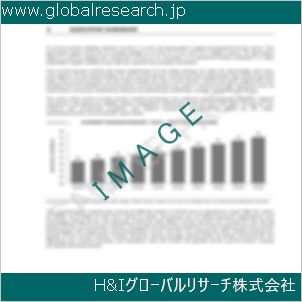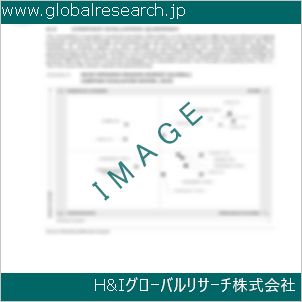Table of Contents
1 Industry Overview of Sodiumsulfite
1.1 Definition and Specifications of Sodiumsulfite
1.1.1 Definition of Sodiumsulfite
1.1.2 Specifications of Sodiumsulfite
1.2 Classification of Sodiumsulfite
1.3 Applications of Sodiumsulfite
1.3.1 Nuclear Application
1.3.2 Non-Nuclear Application
1.4 Industry Chain Structure of Sodiumsulfite
1.5 Industry Overview and Major Regions Status of Sodiumsulfite
1.5.1 Industry Overview of Sodiumsulfite
1.5.2 Global Major Regions Status of Sodiumsulfite
1.6 Industry Policy Analysis of Sodiumsulfite
1.7 Industry News Analysis of Sodiumsulfite
2 Manufacturing Cost Structure Analysis of Sodiumsulfite
2.1 Raw Material Suppliers and Price Analysis of Sodiumsulfite
2.2 Equipment Suppliers and Price Analysis of Sodiumsulfite
2.3 Labor Cost Analysis of Sodiumsulfite
2.4 Other Costs Analysis of Sodiumsulfite
2.5 Manufacturing Cost Structure Analysis of Sodiumsulfite
2.6 Manufacturing Process Analysis of Sodiumsulfite
3 Technical Data and Manufacturing Plants Analysis of Sodiumsulfite
3.1 Capacity and Commercial Production Date of Global Sodiumsulfite Major Manufacturers in 2023
3.2 Manufacturing Plants Distribution of Global Sodiumsulfite Major Manufacturers in 2023
3.3 R&D Status and Technology Source of Global Sodiumsulfite Major Manufacturers in 2023
3.4 Raw Materials Sources Analysis of Global Sodiumsulfite Major Manufacturers in 2023
4 Capacity, Production and Revenue Analysis of Sodiumsulfite by Regions, Types and Manufacturers
4.1 Global Capacity, Production and Revenue of Sodiumsulfite by Regions 2019-2024
4.2 Global and Major Regions Capacity, Production, Revenue and Growth Rate of Sodiumsulfite 2019-2024
4.3 Global Capacity, Production and Revenue of Sodiumsulfite by Types 2019-2024
4.4 Global Capacity, Production and Revenue of Sodiumsulfite by Manufacturers 2019-2024
5 Price, Cost, Gross and Gross Margin Analysis of Sodiumsulfite by Regions, Types and Manufacturers
5.1 Price, Cost, Gross and Gross Margin Analysis of Sodiumsulfite by Regions 2019-2024
5.2 Price, Cost, Gross and Gross Margin Analysis of Sodiumsulfite by Types 2019-2024
5.3 Price, Cost, Gross and Gross Margin Analysis of Sodiumsulfite by Manufacturers 2019-2024
6 Consumption Volume, Consumption Value and Sale Price Analysis of Sodiumsulfite by Regions, Types and Applications
6.1 Global Consumption Volume and Consumption Value of Sodiumsulfite by Regions 2019-2024
6.2 Global and Major Regions Consumption Volume, Consumption Value and Growth Rate of Sodiumsulfite 2019-2024
6.3 Global Consumption Volume and Consumption Value of Sodiumsulfite by Types 2019-2024
6.4 Global Consumption Volume and Consumption Value of Sodiumsulfite by Applications 2019-2024
6.5 Sale Price of Sodiumsulfite by Regions 2019-2024
6.6 Sale Price of Sodiumsulfite by Types 2019-2024
6.7 Sale Price of Sodiumsulfite by Applications 2019-2024
6.8 Market Share Analysis of Sodiumsulfite by Different Sale Price Levels
7 Supply, Import, Export and Consumption Analysis of Sodiumsulfite
7.1 Supply, Consumption and Gap of Sodiumsulfite 2019-2024
7.2 Global Capacity, Production, Price, Cost, Revenue, Supply, Import, Export and Consumption of Sodiumsulfite 2019-2024
7.3 USA Capacity, Production, Price, Cost, Revenue, Supply, Import, Export and Consumption of Sodiumsulfite 2019-2024
7.4 EU Capacity, Production, Price, Cost, Revenue, Supply, Import, Export and Consumption of Sodiumsulfite 2019-2024
7.5 China Capacity, Production, Price, Cost, Revenue, Supply, Import, Export and Consumption of Sodiumsulfite 2019-2024
7.6 Japan Capacity, Production, Price, Cost, Revenue, Supply, Import, Export and Consumption of Sodiumsulfite 2019-2024
8 Major Manufacturers Analysis of Sodiumsulfite
8.1 Manufacturer One
8.1.1 Company Profile
8.1.2 Product Picture and Specifications
8.1.2.1 Type I
8.1.2.2 Type II
8.1.2.3 Type III
8.1.3 Capacity, Production, Price, Cost, Gross and Revenue
8.1.4 Contact Information
8.2 Manufacturer Two
8.2.1 Company Profile
8.2.2 Product Picture and Specifications
8.2.2.1 Type I
8.2.2.2 Type II
8.2.2.3 Type III
8.2.3 Capacity, Production, Price, Cost, Gross and Revenue
8.2.4 Contact Information
8.3 Manufacturer Three
8.3.1 Company Profile
8.3.2 Product Picture and Specifications
8.3.2.1 Type I
8.3.2.2 Type II
8.3.2.3 Type III
8.3.3 Capacity, Production, Price, Cost, Gross and Revenue
8.3.4 Contact Information
8.4 Manufacturer Four
8.4.1 Company Profile
8.4.2 Product Picture and Specifications
8.4.2.1 Type I
8.4.2.2 Type II
8.4.2.3 Type III
8.4.3 Capacity, Production, Price, Cost, Gross and Revenue
8.4.4 Contact Information
8.5 Manufacturer Five
8.5.1 Company Profile
8.5.2 Product Picture and Specifications
8.5.2.1 Type I
8.5.2.2 Type II
8.5.2.3 Type III
8.5.3 Capacity, Production, Price, Cost, Gross and Revenue
8.5.4 Contact Information
…
9 Marketing Trader or Distributor Analysis of Sodiumsulfite
9.1 Marketing Channels Status of Sodiumsulfite
9.2 Traders or Distributors with Contact Information of Sodiumsulfite by Regions
9.3 Ex-work Price, Channel Price and End Buyer Price Analysis of Sodiumsulfite
9.4 Regional Import, Export and Trade Analysis of Sodiumsulfite
10 Industry Chain Analysis of Sodiumsulfite
10.1 Upstream Major Raw Materials Suppliers Analysis of Sodiumsulfite
10.1.1 Major Raw Materials Suppliers with Contact Information Analysis of Sodiumsulfite
10.1.2 Major Raw Materials Suppliers with Supply Volume Analysis of Sodiumsulfite by Regions
10.2 Upstream Major Equipment Suppliers Analysis of Sodiumsulfite
10.2.1 Major Equipment Suppliers with Contact Information Analysis of Sodiumsulfite
10.2.2 Major Equipment Suppliers with Product Pictures Analysis of Sodiumsulfite by Regions
10.3 Downstream Major Consumers Analysis of Sodiumsulfite
10.3.1 Major Consumers with Contact Information Analysis of Sodiumsulfite
10.3.2 Major Consumers with Consumption Volume Analysis of Sodiumsulfite by Regions
10.4 Supply Chain Relationship Analysis of Sodiumsulfite
11 Development Trend of Analysis of Sodiumsulfite
11.1 Capacity, Production and Revenue Forecast of Sodiumsulfite by Regions and Types
11.1.1 Global Capacity, Production and Revenue of Sodiumsulfite by Regions 2024-2029
11.1.2 Global and Major Regions Capacity, Production, Revenue and Growth Rate of Sodiumsulfite 2024-2029
11.1.3 Global Capacity, Production and Revenue of Sodiumsulfite by Types 2024-2029
11.2 Consumption Volume and Consumption Value Forecast of Sodiumsulfite by Regions, Types and Applications
11.2.1 Global Consumption Volume and Consumption Value of Sodiumsulfite by Regions 2024-2029
11.2.2 Global and Major Regions Consumption Volume, Consumption Value and Growth Rate of Sodiumsulfite 2024-2029
11.2.3 Global Consumption Volume and Consumption Value of Sodiumsulfite by Types 2024-2029
11.2.4 Global Consumption Volume and Consumption Value of Sodiumsulfite by Applications 2024-2029
11.3 Supply, Import, Export and Consumption Forecast of Sodiumsulfite
11.3.1 Supply, Consumption and Gap of Sodiumsulfite 2024-2029
11.3.2 Global Capacity, Production, Price, Cost, Revenue, Supply, Import, Export and Consumption of Sodiumsulfite 2024-2029
11.3.3 USA Capacity, Production, Price, Cost, Revenue, Supply, Import, Export and Consumption of Sodiumsulfite 2024-2029
11.3.4 EU Capacity, Production, Price, Cost, Revenue, Supply, Import, Export and Consumption of Sodiumsulfite 2024-2029
11.3.5 China Capacity, Production, Price, Cost, Revenue, Supply, Import, Export and Consumption of Sodiumsulfite 2024-2029
11.3.6 Japan Capacity, Production, Price, Cost, Revenue, Supply, Import, Export and Consumption of Sodiumsulfite 2024-2029
12 New Project Investment Feasibility Analysis of Sodiumsulfite
12.1 New Project SWOT Analysis of Sodiumsulfite
12.2 New Project Investment Feasibility Analysis of Sodiumsulfite
13 Conclusion of the Global Sodiumsulfite (CAS 7757-83-7) Industry 2024 Market Research Report
| ※参考情報 亜硫酸ナトリウム(Sodium sulfite)は、化学式 Na2SO3 で表される無機化合物であり、CAS番号は 7757-83-7 です。白色の結晶または粉末状で、水に溶けやすい特性を持ちます。この化合物は、主に工業用途や化学反応において重要な役割を果たしています。 亜硫酸ナトリウムの特徴として、まずその反応性が挙げられます。この物質は還元剤としての性質を持ち、特に酸化剤と反応することができます。この性質により、亜硫酸ナトリウムは多くの化学反応で利用されます。さらに、亜硫酸ナトリウムは水中で亜硫酸イオン(SO3^2-)を放出するため、pH調整剤としても用いられることがあります。水溶液中では、中性または弱アルカリ性を示すことがあります。 亜硫酸ナトリウムには、いくつかの種類があります。主なものは無水亜硫酸ナトリウムですが、結晶水を含む形態(七水和物 Na2SO3·7H2O)も存在します。これらの形態は、用途や使用条件によって使い分けられます。また、亜硫酸ナトリウムは、その生成過程で副産物として異なる形態の亜硫酸塩が生成されることがありますが、主に無水物とその水和物が一般的に知られています。 亜硫酸ナトリウムの主な用途は、工業的なものが多く見られます。まず、食品産業では、漂白剤や酸化防止剤として利用されます。特に乾燥果物やワインの保存において、酸化を抑制するために使われることがあります。このように、食品において亜硫酸ナトリウムは、品質保持や風味に大きな影響を与える成分として重要です。 また、亜硫酸ナトリウムは水処理の分野でも利用され、主に重金属の除去や浄化処理に役立っています。水中の有害物質を無害化するために、亜硫酸ナトリウムは酸化剤と反応し、有害物質を不活性化することができます。これにより、環境保護の観点からも重要な役割を果たしています。 さらに、化学工業においても、亜硫酸ナトリウムは化学合成の中間体として用いられます。特に、染料や化合物の製造過程での還元剤としての利用が一般的です。この用途では、亜硫酸ナトリウムが他の化学物質と反応し、必要な中間体や最終生成物を形成するため、効率的な合成を可能にします。 医療分野においても、亜硫酸ナトリウムが一定の役割を果たしています。消毒薬や抗酸化剤として使用されることがあり、特に医薬品の製造過程での酸化防止や安定性向上に寄与しています。 亜硫酸ナトリウムの関連技術としては、調製技術や反応技術が重要です。特に、亜硫酸ナトリウムの製造過程では、二酸化硫黄(SO2)を還元する方法や、硫酸ナトリウムからの還元反応が一般的に用いられています。これにより、高純度の亜硫酸ナトリウムを効率的に得ることが可能です。また、これを用いた新しい化学合成技術の開発も進められており、その応用範囲は拡大しています。 環境への影響についても考慮が必要です。亜硫酸ナトリウムは、適切な取り扱いや処理を行わない場合、環境汚染を引き起こす可能性があります。そのため、使用する際は安全基準や環境基準を遵守することが求められます。 総じて、亜硫酸ナトリウムは多岐にわたる用途を持ち、その反応性や特性を活用される化合物です。工業や食品、医療といった分野での利用が強調される中で、関連技術の進展も続いており、その重要性は今後も増していくことでしょう。 |
❖ 免責事項 ❖
http://www.globalresearch.jp/disclaimer












